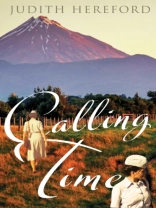Murder, neglect, excessive regulation. What’s the difference? Written in two parts,
Calling Time brings to life the significance of elderly care with particular focus on the poor treatment of those in residental care.
Calling Time follows the fortunes of two very different characters, Kristine and Angela, both of whom are carers in a residental home in 1950s’ New Zealand. In Part I, Angela takes it upon herself to put 4 patients out of their misery. Written from the perspectives of the residents, each account provides an illuminating insight into how little care each receive. Angela soon finds that questions are being raised about the care she provides and when questions are asked about a 5th patient in her care, she is scared into resigning.
Set 46 years later, Part II explores how Angela and Kristine cope as they grow old. Angela has become a virtual recluse, living in remote hill country with only her dog for company. Having moved to the UK, Kristine, a model of caring when she lived in New Zealand, finds that her elderly mother-in-law tries her patience, especially when she is living with them. After putting her in a home, the regulations become such a burden that the home is at risk of going out of business.
Calling Time highlights the inadequacy of residential care that befalls many elderly residents. It also asks whether it’s better to be put out of your misery before being forced to move to a home with the possibility of ill treatment. This book is written from several different perspectives within the care community – the matron, the carers, the residents – and will appeal to readers who have worked in a caring profession and as well as those interested in care for the elderly.












